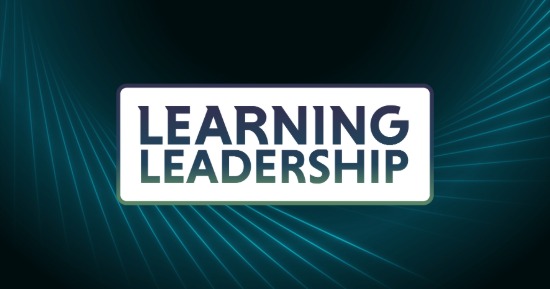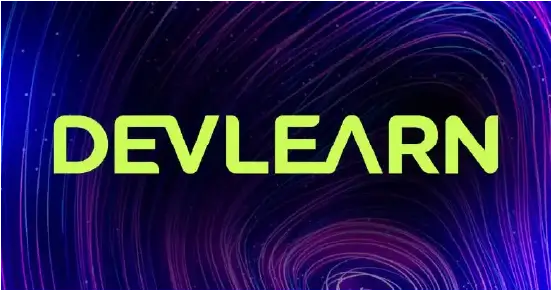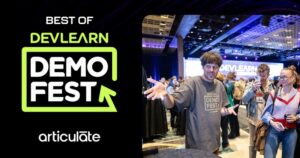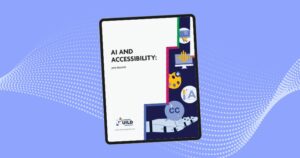We’re in the midst of a digital revolution of unprecedented scale. In “Automation, AI Will Advance—and Challenge—Learning Leadership,” we launched an exploration of the role of L&D teams and, critically, learning and training leaders, in bringing automation and AI into their organizations. The aim is to enjoy a huge range of benefits that, for example, marketing, sales, finance, and HR teams already reap from incorporating automation and AI into their workflows, such as increased efficiencies, accuracy, and speed.
Our article series looks at the top three areas where we see automation and AI revolutionizing the way in which successful L&D teams work: Asset libraries and knowledge hubs; hyper-personalized, truly adaptive learning; and capability mapping. This article examines the impact of AI and automation on maintaining asset libraries and knowledge hubs.
Manually cataloging information is no longer feasible
Most organizations’ internal asset libraries and knowledge hubs are growing in volume and complexity, and often at an ever-accelerating pace. Their challenge is successfully managing all of this information and content. Ultimately, of course, the goal is to utilize the content to maximum effect.
While knowledge, skills, and information are much more accessible today than ever, they are also much more difficult to harness effectively, as the amount of information and digital assets an organization holds is vast. And business units and individuals keep adding more.
Organizations continuously look to utilize and reuse existing digital assets, not only because these assets can be expensive to create and also to curate. Traditionally, organizations have looked to achieve this via cataloging and tagging—by hand—a critical and an incredibly arduous, as well as error-prone, task.
Looking at this from a learning, training, and performance perspective, cataloging would mean effectively and efficiently utilizing assets and course content around skills or competencies for formal and informal learning, synchronously and asynchronously, as well as catering to those employees looking for answers in the flow of work, in real-time. The challenge for the latter is to find the right piece of information, quickly and efficiently, and of course with confidence in the system and the accuracy and currency of the content.
Although training and performance support assets are merely a subset of the digital assets and knowledge hubs within an organization, even these are growing to the point of becoming unmanageable. As a result, valuable assets are often underutilized and, at least for the vast majority of employees in an organization, ‘unsearchable’ from a practical standpoint.
Identifying valuable information assets
So what is all of this content? Organizations tend to accumulate vast collections of learning programs and modules, often purchased from a range of providers. In addition, many organizations own a large range of in-house created and curated content: onboarding, product training, systems training, compliance, health and safety, sales, leadership, customer service training, and much more.
Through the advent of the LXP—learning experience platform—and a recent buzz around social or peer-to-peer learning, many organizations now possess a vast amount of informal content, too. This tends to take the form of documents, videos, and job aids designed by those who proactively seek to participate in peer-to-peer learning and performance improvement; sharing knowledge, good-practice, and useful job aids with colleagues.
At the typical organization, this content has been collected over years.
These libraries are, despite their often fantastic range of content and therefore huge potential, lacking in terms of usability and searchability. Ensuring that content is relevant and up-to-date is an additional, increasingly unmanageable, task. Thus the library contents are underused and underutilized, and the human system used to manage the content so far is simply not scalable. In many organizations, it is reaching its limitations, if it hasn’t already done so.
Automating content management offers a solution
Automation, through AI, offers a solution. Automated content management is already changing the game for organizations globally, across industries and sectors. This solution is scalable, extremely fast, and benefits individuals as well as teams and the organization as a whole.
Hundreds of thousands of pieces of digital content across all topics, skills, and competencies can now be contextualized—we might also refer to this as either cataloged, tagged, or mapped—and managed. At the touch of a button, AI contextualization engines can contextualize all forms of content and file types; from simple texts and documents, policies, and manuals, to videos, slides, quizzes, case studies, worked examples, and assessments, right through to VR and AR learning experiences.
What AI contextualization does
Through contextualization, the AI understands each piece of content, its relationship to other pieces of content, and its complexity in relation to the other pieces of content.
We can understand complexity by imagining a textbook: Later chapters will often require prior knowledge of previous chapters, therefore placing that chapter higher in the ‘complexity tree’ than those previous chapters.
What we are describing here is a vastly different approach to libraries and knowledge hubs altogether. Let’s look at this more closely, using a traditional library as an example. Imagine the human-tagged knowledge hub, organized in folders and subfolders, like a traditional library with its rooms and shelves. Using indexes in the library’s catalog, the different library sections, and ordering by numbers or alphabet, users can find what they are looking for relatively quickly and efficiently. In this scenario, the user has direct access into the library, meaning they move physically through the library space, which is why the organization system in a library is critical to help the user find their way.
Now, let’s look at how this would change if we bring contextualization and AI into the mix. What this basically means is employing the AI contextualization engine as the librarian. The user would no longer require physical access to the library, as the librarian would go and fetch, ultra-fast, whatever the user is looking for. And the great news is our new librarian needs no prior exposure to the library, nor does the librarian require the library to be ordered in any fashion whatsoever. With the AI engine as our librarian, we could in theory have all the content piled up in one huge pile, no system of any kind would be required.
A new librarian would be asked to quickly read all the books, magazines, and articles, which the librarian would do in seconds or minutes. After that, the librarian knows all the content, inside out, as well as where to find it—and the librarian also never forgets anything.
From here on, it doesn’t matter whether we’re looking for eighteenth-century poetry, Superhero comics, or the history of ship building. And it doesn’t matter if it’s a whole book, a chapter, or a paragraph that contains the things the user is looking for. And because the librarian understands context, it also doesn’t matter whether we used the word ship, boat, or ocean liner; we would always end up with the right selection. And our AI librarian never tires, so we can ask it to organize everything by date of publication, by complexity and depth of the content, by certain chapters, or by how often a book, article, chapter, or paragraph has been previously found useful.
Thus, the contextualization engine becomes a powerful content management tool. It is also easy to use and requires no particular subject matter knowledge of the user; the librarian who has read everything does that for the user. And this works, of course, with articles, slide decks, audio, video, and even VR/AR content, and basically any file type.
Assets can be mapped to competencies, skills, learning objectives, departments, the requirements of a specific course or workshop, or to the horizontals and verticals of an organization’s internal restructuring model. And this takes place within seconds and minutes, and at scale.
Benefits of automated contextualization
Through automation, L&D teams are empowered to easily keep everything in digital asset libraries and knowledge hubs, from a single piece of content to full programs of learning, well-managed and up-to-date. Leaders and managers will be able to have critical information at their fingertips, as the cataloged content is quickly and easily searchable.
For example, let’s look at the following questions:
- What is the content available across a certain set of skills or competencies that exists today within the organization?
- And for that set, how good is the coverage of questions and assessments in each topic generally, but also at every level and branch of the complexity tree?
- What areas need developing?
- What content needs to be created or curated?
Once content has been contextualized with the aid of AI, these become simple questions. Or imagine that a product has been updated and specific content needs to be archived. No problem; it is not even necessary to have tagged things in the right fashion previously or to rely on pure word searches. This is digital transformation in action, ultra fast and at scale.
With the advent of AI contextualization engines, learning leaders will find that some of the slowest and least agile building blocks and processes in and around L&D, such as skills and competency frameworks and catalog content libraries, can become quick and agile tools for an organization’s delivery of effective and impactful content management, as well as learning and performance.
Automated contextualization drastically improves search capabilities too, as the AI automatically segments assets such as documents, videos, and audio into conceptual parts.
Once information is efficiently cataloged using AI, users can search for any information they require, whether as part of a course or training or in the flow of work, and the AI engine will point the user to the most applicable resources. The user can even ask a direct question.
A new era of efficient, accurate cataloging and search
Automation will revolutionize the way organizations manage, organize, and utilize knowledge hubs and content libraries, in L&D and in the wider organization, through AI contextualization engines. Automation will further maximize utilization of the value of the existing digital assets by automating easy access and search functionality, as well as empowering real-time archiving of “out-of-date” content. It will even automate creating and curating new assets by pulling together content, super-fast, that fits an even extremely specific competency framework or skills matrix, such as for example an onboarding program that includes basic sales training, basic training on the customer management system, pricing, as well as a certain range of products and in-depth product knowledge.
But, automation does much more than contextualize content. With the ability to map content as well as practice exercises, questions, and assessments automatically into each concept’s complexity tree, it is now possible to use automation and AI to deliver adaptive and truly personalized learning content and learning paths. Digital learning will going forward be as personalized as it used to be in the rare case where a learner worked with a personal mentor or trainer. Furthermore, this empowers and drives peer-to-peer knowledge sharing and the utilization of peer-driven content.
Our next article in this series will delve into these areas further, with an exploration of how we can scale fully personalized learning and training, as well as knowledge sharing.
Explore emerging topics with learning leaders
The Learning Leaders Alliance is a vendor-neutral global community for learning leaders who want to stay ahead of the curve. Join us to meet fellow leaders and aspiring leaders, build your skillset, and delve into trends and topics affecting your work.
The Learning Guild’s Alliance Membership package includes access to exclusive digital events and content curated for today’s modern learning leader, as well as opportunities to attend in-person learning leadership events held around the globe. Register now for the summer Learning Leaders Online Forum, where Markus Bernhardt will present a session on adaptive learning, which relies on automation and AI.










